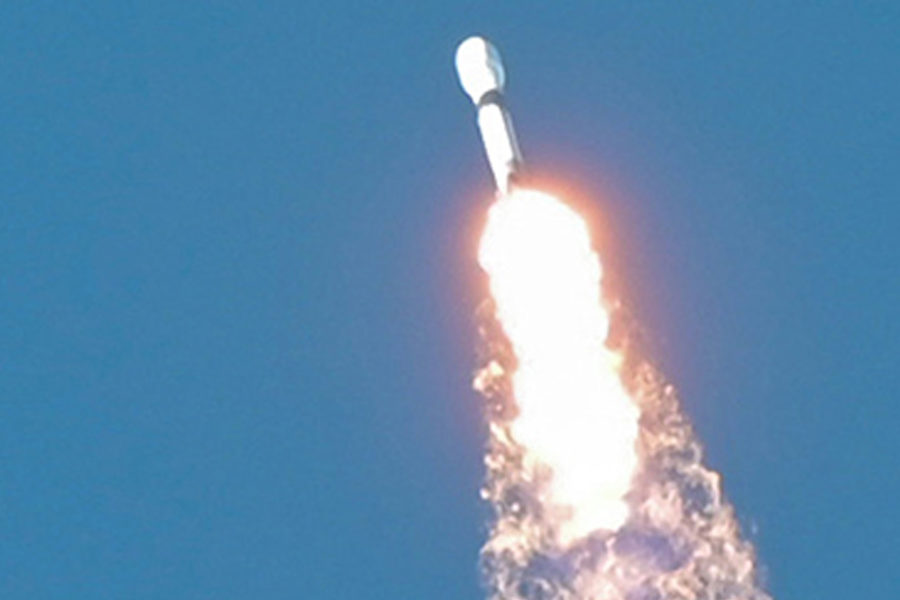The first missile-tracking satellites in a constellation planned by the Space Development Agency have maneuvered into their intended orbit and sent back their first images, the agency announced June 14. But the next SDA launch will likely slip past its June target date.
SDA put eight communications satellites into space in its first launch, and while all are still undergoing tests, one apparently appears compromised by an “assembly issue,” the agency added in social media posts. A spokesperson declined to share the first images publicly.
Meanwhile, an SDA spokesperson told Air & Space Forces Magazine that the agency has “low confidence” that it will meet its planned June timeline for the second launch of its “Tranche 0” satellites, due to “critical elements necessary for the satellite’s intended demonstrations.” The spokesperson declined to clarify.
SDA still plans for 28 satellites in Tranche 0 of its Proliferated Warfighter Space Architecture and that the next launch will still reach space this summer. The agency is trying to build constellation of hundreds of satellites in low-Earth orbit, with an ongoing stream of new satellites that will make it nearly impossible to shut down the constellation.
SDA director Derek M. Tournear described this first batch of satellites as the “warfighter immersion tranche,” giving service members the opportunity to work with the systems, understand their capabilities, and begin to imagine how they might be employed.
With the first parts of the Tracking Layer, used for missile warning and tracking, in place, the satellites will now being looking for what Tournear previously called “targets of opportunity”—any sort of launch over the next few months to detect and track to gather calibration data. After that, formal assessments that track U.S. test objects will begin in the spring of 2024.
The Transport Layer satellites, used for carrying data and communications, “are undergoing the necessary steps to begin tactical data demonstrations and orbit raising soon,” SDA wrote in a social media post.
The biggest challenge for those satellites will be testing their ability to relay data to the ground using Link 16, the military’s tactical data network. Those demonstrations haven’t taken place yet, but the agency has transmitted data using radio frequency channels.
Officials in the Pentagon and Congress are watching Tranche 0 closely as a proof of concept for SDA’s unique approach, which is defined by rapid timelines, numerous small spacecraft, and increased contractor competition. The first eight satellites went from from contract to orbit in two and a half years, extremely fast for a military space program. SDA has already started soliciting proposals for Tranche 2, having awarded deals for Tranche 1 earlier. Last week, Space Systems Command announced it had assigned seven launches for Tranche 1, five to SpaceX and two to United Launch Alliance.
In its markup of the 2024 National Defense Authorization bill, the House Armed Services strategic forces subcommittee requested a briefing from the Secretary of the Air Force on SDA’s plans “to acquire on-orbit capabilities including the best available apertures to include multibeam active phased array antennas, the ability to connect multiple users with an efficient deployment of satellite assets, and efficient implementation of space-based tactical data links.”
